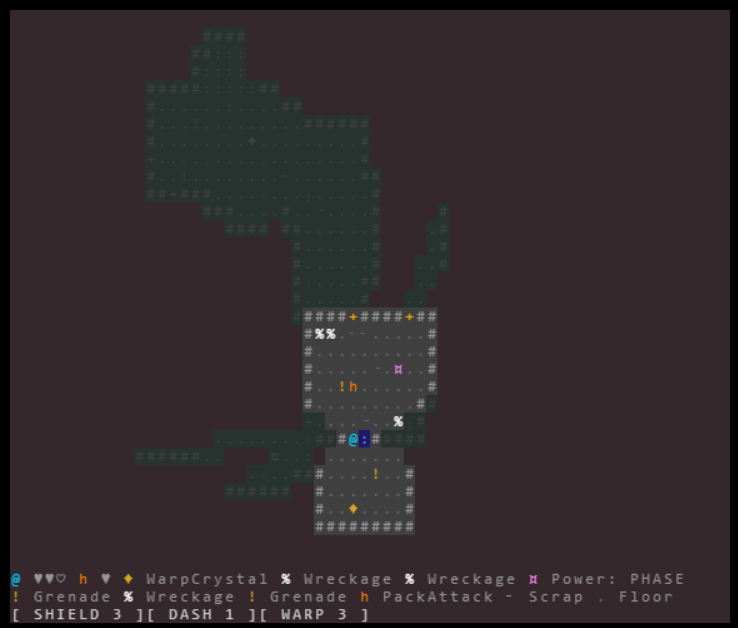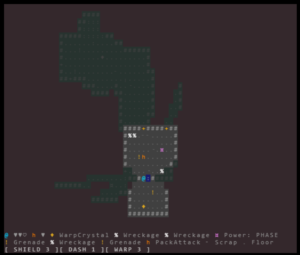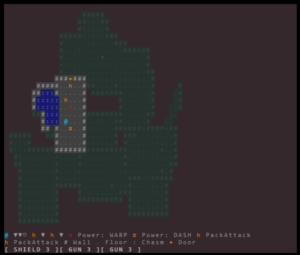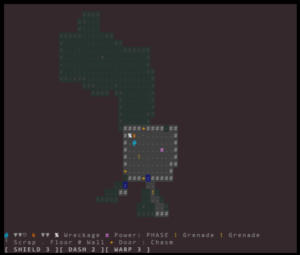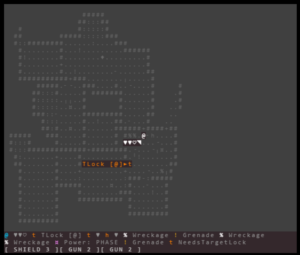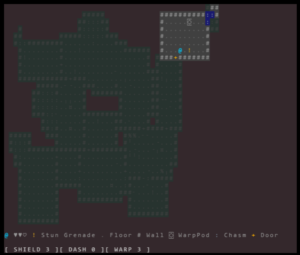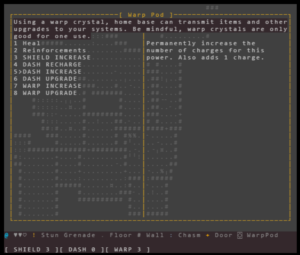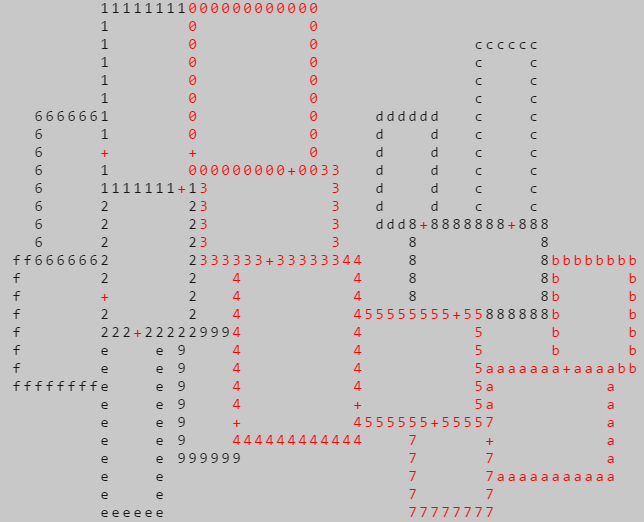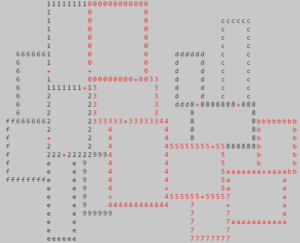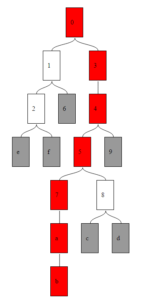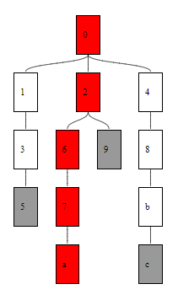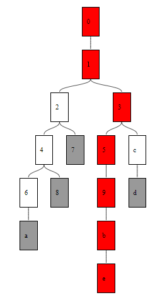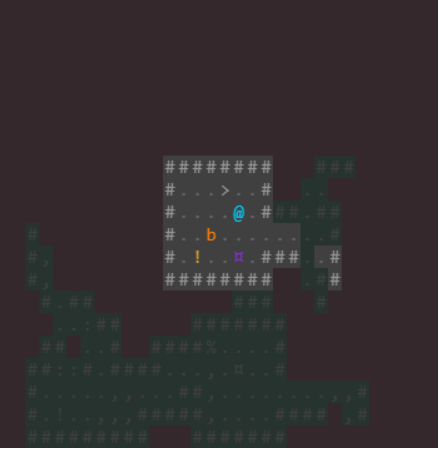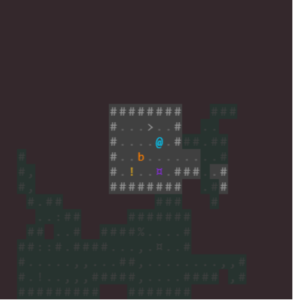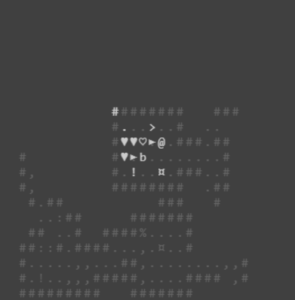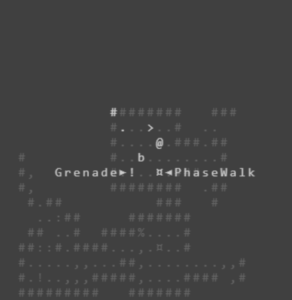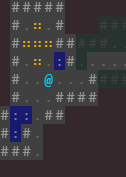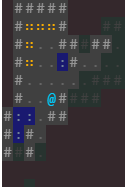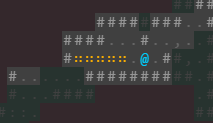You can play it here.
Gameplay
Hardpointe is a “medium” sized roguelike with a focus on tactical combat and movement. Managing a limited set of powers, upgrades, and items will be critical to your success.
Our Story So Far
Humanity is on the brink of annihilation. Ever since the robotic uprising of the late 1990s, humans have waged a bitter war against their would-be AI overlords. Many decades later, Earth is finally free of war, but elements of the robotic hordes have taken to space and have taken refuge in the asteroid belt.
For a time, many thought the robots dormant, or dead. But they were building. Utilizing self-replicating machinery, they turned countless asteroids into factories, crisscrossed with countless mazes and dungeon-like interiors. Some they turned into weapons, and began hurling them at Earth.
Only a few asteroids have penetrated Earth’s defenses, but even these few have wiped out entire cities.
All efforts to attack and neutralize these strongholds have failed. Your mission is to succeed where others have failed. Infiltrate the asteroid, grab the Control Core, and bring it back safely. Your suit should be able to interface with any weapon systems that you find – human or robot. We cannot get close enough to reliably use our telewarp technology – so you will have to travel on foot. We may be able to link up to your suit at various beacon points. Look for warp crystals – the robots use them as much as we do.
Controls
|
Keys
|
Description
|
|
WASD, Arrow Keys
|
Movement (4-directional)
|
|
SPACE
|
Action (Wait, Pickup, Use Stairs, Activate)
|
|
e
|
Wait Only (by popular request)
|
|
1, 2, 3
|
Activate Power
|
|
i
|
Inventory
|
|
x
|
eXamine (look around)
|
|
z
|
Heads Up Display
(cycle with movement keys)
|
|
m
|
Power Listing
|
How to Play
Winning
Health
Powers
Shields
Dash
Hack
Allows you to overwrite an enemies programming, turning them into a permanent ally. Allies will try to keep a respectful distance from you – but they still sometimes get stuck in doors, so be patient with them. Enemies will go after allies first if they can get to them. There is at least one “unhackable” enemy in the game – you will know it when you see it.
Cloak
Activates temporary invisibility. Enemies will not be able to see you while cloaked, allowing you to escape or sneak past them unsuspected. Enemies will move towards the last place they saw you, making for an easy way to set up traps. Any attack will remove your cloak, but any melee attack will also gain +1 damage.
Phasewalk
Gives you the ability to walk through walls and enemies. While phased, enemy attacks will go ‘through’ you, so if you can set them up properly, enemies will take each other out while trying unsuccessfully to kill you.
Heavy Axe
A powerful (and rare) ranged weapon. When thrown, the axe can cut through multiple enemies. Because it is quantum-bound to your suit, the axe can also travel back to you – even across twists and turns – further damaging enemies on the return path.
Blasters (Guns)
At the moment, they come in four varieties:
- Kinetic Blaster – No damage but triggers a powerful knockback effect (like a blast grenade)
- Stun Gun – No damage but temporarily stuns enemies
- Railgun – Simple 1 damage weapon
- Cannon – Powerful 2 damage ranged weapon – use wisely
Grenades
You’ll find lots of grenades lying around for some reason. You can carry them in your inventory and throw them. At the moment, they come in four varieties:
- Blast Grenade – has a powerful knockback blast that will send enemies flying back from the center of the blast. Anyone at the actual center will not be affected, making it a sometimes useful escape tool. Any enemies sent into walls will be temporarily stunned.
- Stun Grenade – has a mass-stunning effect on any targets (including you) caught in the blast. Be careful, there is at least 1 “unstunnable” enemy.
- Grenade – Does 1 damage to all targets caught in the blast
- EMP Grenade – Knocks out all shields on targets caught in the area of effect
Nanotech
These are phials of tiny nanites. When thrown, they will begin to replicate and modify the surrounding terrain in mysterious ways. Some affects are beneficial to you, so be careful not to let your enemies take advantage of this. (Note these may temporarily out of the game while I balance them and make them a bit more interesting in terms of useable terrain)
Enemies
Tactics
Wall Smash
Wreckage
Doors
Closed doors count as solid walls for purposes of smashing enemies into them. However, a successful smash attack will destroy the door.
Target Locks
Warp Crystals and Warp Beacons
- INCREASE – Increases the number of charges this power has – but will not recharge. You will get 1 charge along with the increase, though.
- RECHARGE – Restores the power to the full number of charges.
- UPGRADE – Some powers can be made more powerful (longer duration, further distance), doing this will not affect the number of charges.
Damage Stacking
Winning the Game
Grab the Control Core at the deepest level and return it to the entrance you started at. Once you grab the core, the enemy will throw even more at you, so be prepared to fight your way up.

